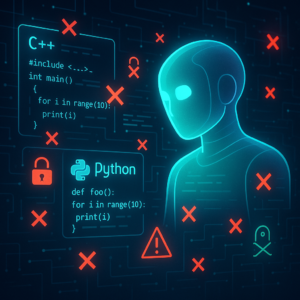Hidden Signatures: How AI Models Leave Their Digital Fingerprints

Hidden Signatures: How AI Models Leave Their Digital Fingerprints
Large Language Models (LLMs) like ChatGPT, Claude, and Gemini may all seem like interchangeable word wizards, but according to recent research, each of them has unique quirks—distinctive “idiosyncrasies”—hidden in the way they generate text.
These subtle differences are so pronounced that a simple machine-learning classifier can correctly identify which LLM wrote a given piece of text with over 97% accuracy! Even after rewording, translating, or summarizing a response, these fingerprints stubbornly persist.
What does this mean for AI users, businesses, and developers? And how can we leverage these insights? Let’s break it down.
AI Models Aren’t As Alike As They Seem
On the surface, different AI models might produce relatively similar-looking responses. Ask both ChatGPT and Claude to explain quantum mechanics, and you’ll get a structured, informative answer from both.
But behind the scenes, these AI models have distinct linguistic habits—preferences for certain words, formatting choices, or even specific ways of structuring sentences.
Researchers conducted an experiment where they trained a classifier to predict which LLM generated a given text. The results were shocking:
– With five major AI models (ChatGPT, Claude, Grok, Gemini, and DeepSeek), the classifier achieved 97.1% accuracy, far above the 20% chance level.
– Even when comparing models from the same family (e.g., different sizes of Qwen-2.5), the classifier still managed 59.8% accuracy.
The Science Behind AI’s Digital Fingerprints
1. Word Choices and Sentence Patterns
Each LLM has a “preferred” way of speaking. For instance:
– ChatGPT tends to use “certainly”, “such as”, and “overall” more frequently.
– Claude prefers “according to”, “based on”, and “here” to frame its responses.
Researchers even found that just the first few words of an AI response contained enough information to make an educated guess about which model produced it!
2. Markdown Formatting Habits
Some AI models love using bold headers, bullet points, or lists to organize responses, while others stick to plain-text explanations.
– ChatGPT, for example, frequently bolds key phrases and includes structured lists.
– Claude, in contrast, keeps things simpler with minimal formatting.
Even when text was stripped down to just its markdown components (leaving placeholders like “xxx” in place of words), classifiers could still guess the source model with over 73% accuracy!
3. Semantics Stick, Even When Rewriting
In an effort to strip away artificial model quirks, researchers tested how rewriting, translating, and summarizing affected classification accuracy.
Surprisingly:
– Paraphrasing and translating AI-generated text into another language barely reduced accuracy.
– Even summarizing responses still allowed the classifier to predict the source LLM with well above random accuracy.
This suggests that each model’s unique way of structuring meaning goes beyond surface-level word patterns—it’s baked into how they “think.”
Why Do These Differences Matter?
1. Implications for AI-Generated Content
Knowing that each model leaves behind a fingerprint helps us understand the biases and origins of AI-generated text. This could be important for:
– Detecting AI-written content on the internet. (No more mystery about whether that article was written by a human or AI!)
– Understanding biases in different models, since their training data and stylistic tendencies vary.
2. Caution for AI Model Training
Many companies fine-tune AI models using synthetic data (responses from other LLMs). But this study suggests that when AI models are trained on another model’s outputs, they inherit its quirks—and in some cases, this reduces diversity and originality.
This means organizations training AI models on AI-generated data risk developing “copycat models” rather than truly independent systems.
3. Identifying AI Model Similarities
The research also shows that we can measure an AI model’s similarity to another by tracking how often a classifier confuses one for the other.
For example, when comparing ChatGPT, Claude, Grok, Gemini, and DeepSeek:
– Many of Grok’s outputs were misclassified as ChatGPT (82.8% of the time), meaning it shares strong characteristics with OpenAI’s model.
– Outputs from both ChatGPT and DeepSeek were frequently confused with Phi-4, implying these models have overlapping linguistic traits.
This kind of similarity analysis could help regulators, developers, and researchers understand whether some AI models are simply rebranded versions of others.
Key Takeaways
-
Large Language Models have distinct writing “fingerprints.” Even without technical knowledge, AI-generated text can often be linked back to a specific model based on subtle writing habits.
-
AI-generated content can be classified with over 97% accuracy! Even tricks like paraphrasing, summarizing, or translating don’t eliminate these signatures.
-
Training AI models on synthetic data spreads these quirks. Companies that use AI-generated content to train new models risk inheriting the biases and patterns of existing systems.
-
Some AI models are surprisingly similar. Models from different companies (like Grok and ChatGPT) produce remarkably alike responses, often indistinguishable by a trained classifier.
-
Understanding these idiosyncrasies is crucial for AI transparency. From AI-generated articles to business chatbots, the ability to trace AI content back to its source can help identify biases and ensure originality.
As AI-generated text continues to flood the internet, being able to recognize which AI wrote what will become an increasingly valuable skill. Whether you’re a researcher, developer, or just an AI enthusiast, these findings provide a fascinating glimpse into how even the most advanced models aren’t as interchangeable as they seem. 🚀
If you are looking to improve your prompting skills and haven’t already, check out our free Advanced Prompt Engineering course.
This blog post is based on the research article “Idiosyncrasies in Large Language Models” by Authors: Mingjie Sun, Yida Yin, Zhiqiu Xu, J. Zico Kolter, Zhuang Liu. You can find the original article here.




